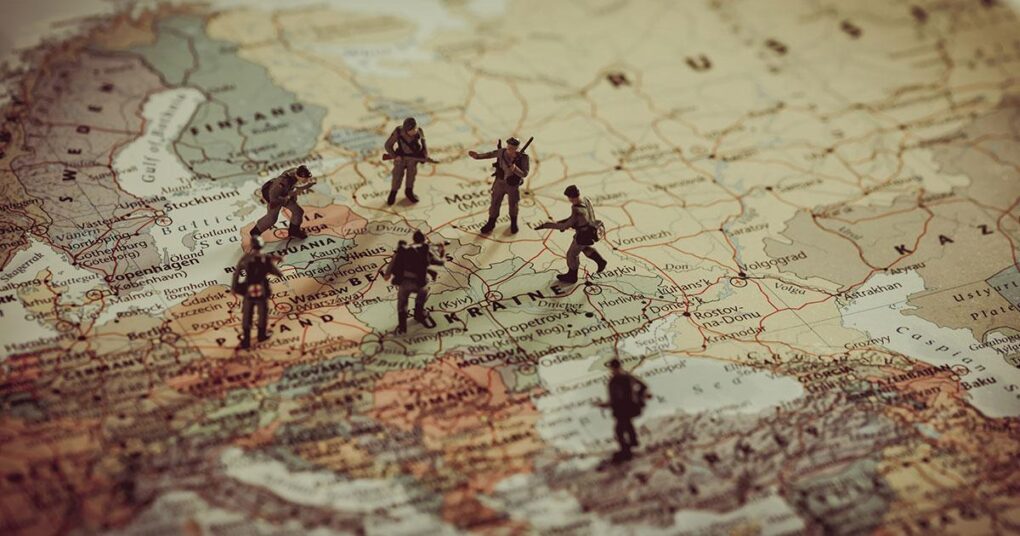
As Ukrainian forces continue their much-hyped counteroffensive to take back objected to territories in the country’s eastern and southern areas, we’re confronted with clashing coverage of the project. Many reports say Ukraine’s forces are having a hard time to break through the minefields fortifying Russia’s lines. And many admit that even the abrupt and remarkable Wagner Group mutiny did not appear to hand Ukraine much of a benefit on the front. Days earlier, in a relocation that looks like damage control, Ukraine’s defense secretary even revealed that Kyiv would no longer measure success in recaptured area but would instead just intend to destroy as much Russian military facilities as possible.
Still, according to some Western reporters, this is all part of Ukraine’s plan. They’re just evaluating Russian resistance to discover weak points so they can much better allocate resources during the next phase of the counteroffensive. And that’s when the huge gains will occur. Perhaps that’s true, however still, other protection about Ukraine’s losses would have you think the counteroffensive has actually been a horrific disaster.
Much like the wider war, how you see this counteroffensive playing out depends nearly entirely on where you get your news. That is not an accident. As people of the most affluent country whose federal government manages the most military hardware on the planet, it is very important to bear in mind that all protection of this war should be viewed with some standard degree of skepticism. This is since various parties– in both governments and the media outlets themselves– are striving to bend the American public’s understanding of the war to their benefit.
That is, obviously, nothing brand-new. In 1941– the last time a European war threatened to go international– the British sent an intelligence officer named William Stephenson to the United States and tasked him with running an information operation to turn American popular opinion away from noninterventionism.
The main approach Stephenson’s stories group utilized was privately planting thoroughly crafted– and in some cases straight-out phony– stories in the most significant American newspapers and publications. These stories were particularly created to represent British forces as having ample guts to handle the Germans however lacking sufficient resources, regardless of how precise that representation was at any given time.
It was a particular tone that the UK’s Secret Intelligence Service (MI6) believed had the best opportunity of encouraging the American public to support signing up with the fight. Ever since, every group that the American political establishment wants to support militarily gets provided to the American people in a comparable style– from the Mujahideen to the Syrian Kurds to the current Ukrainian regime.
Though we may not understand about the frequency of covert details operations for a long time, a pair of stories released last month provide a window into some more overt efforts to shape our understanding of the war in Ukraine. Initially, Thomas Gibbons-Neff, a Ukraine correspondent for the New York Times, composed a viral story detailing how Ukrainian press officers and some Western reporters have attempted to downplay, validate, or conceal using Nazi symbols by Ukrainian soldiers.
One particular passage tells of Western photojournalists asking their subjects to eliminate patches with Nazi emblems prior to taking pictures. By doing so, these journalists crossed the line from documenting their topics to staging them.
On the exact same day, previous New York Times media writer Ben Smith released an article reporting that lots of Western journalists have grown annoyed with how the Ukrainian federal government uses gain access to and accreditation to shape war coverage. For example, the Ukrainian military threatened to withdraw a photojournalist’s qualifications after he took photos of conscripted soldiers in a trench without the existence or permission of a military press officer.
In another example, an NBC News team traveled to Crimea to talk to locals about the war. After reporting that most people they spoke to chosen that Crimea came from Russia, the Ukrainian government withdrawed NBC’s qualifications and restricted their in-country team to a hotel.
Smith even brings up Thomas Gibbons-Neff from above, who had his access and credentials withdrawed after reporting on Ukraine’s use of prohibited cluster munitions. There’s no concern that, a minimum of to some extent, the continuous threat of a loss of access impacts everybody reporting over there in a main capability.
This is not a brand-new or uncommon strategy. The US federal government used comparable strategies to help shape the narrative of its wars in Afghanistan and Iraq. Most professional journalists struggle endlessly to discover sources. So, by granting comprehensive gain access to that can constantly be withdrawed, federal governments can run an effective carrot-and-stick ploy to control media coverage.
Our views of war are deformed by design. Sure, the Russian program is installing a comparable effort to control how the Russian individuals see the war, however it would be absurd to say that the Kremlin holds an influence over the American public that’s even comparable to the United States or Ukrainian governments.
In spite of what the media, the government, or your intermediate school civics teacher wants you to believe, you do not require to frantically stay up to date with the hourly developments in Eastern Europe to be a good citizen. However if you select to follow this war, comprehend which parties contribute to delivering whatever details you’re taking in due to the fact that not everybody is attempting to tell you the truth.

